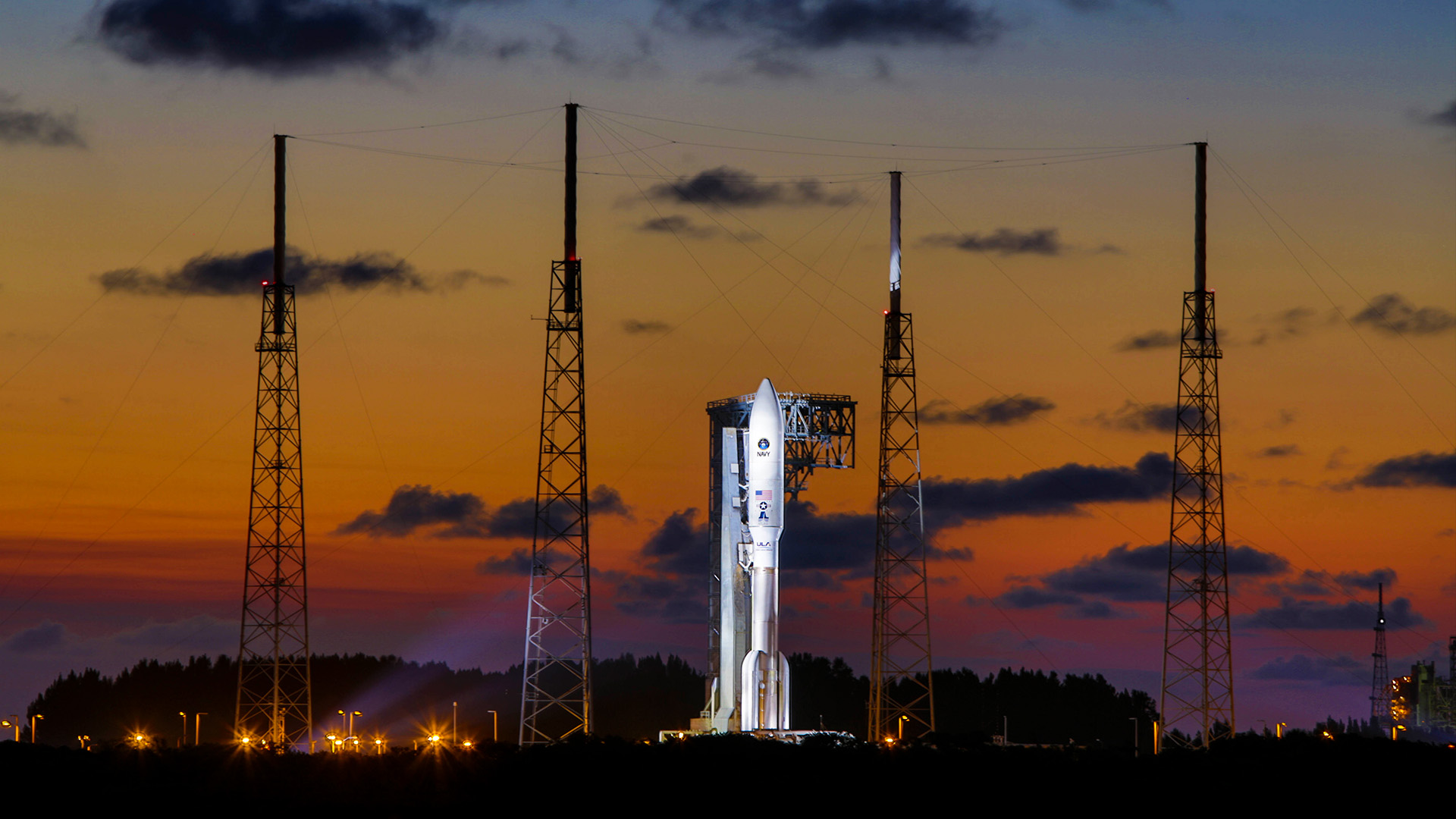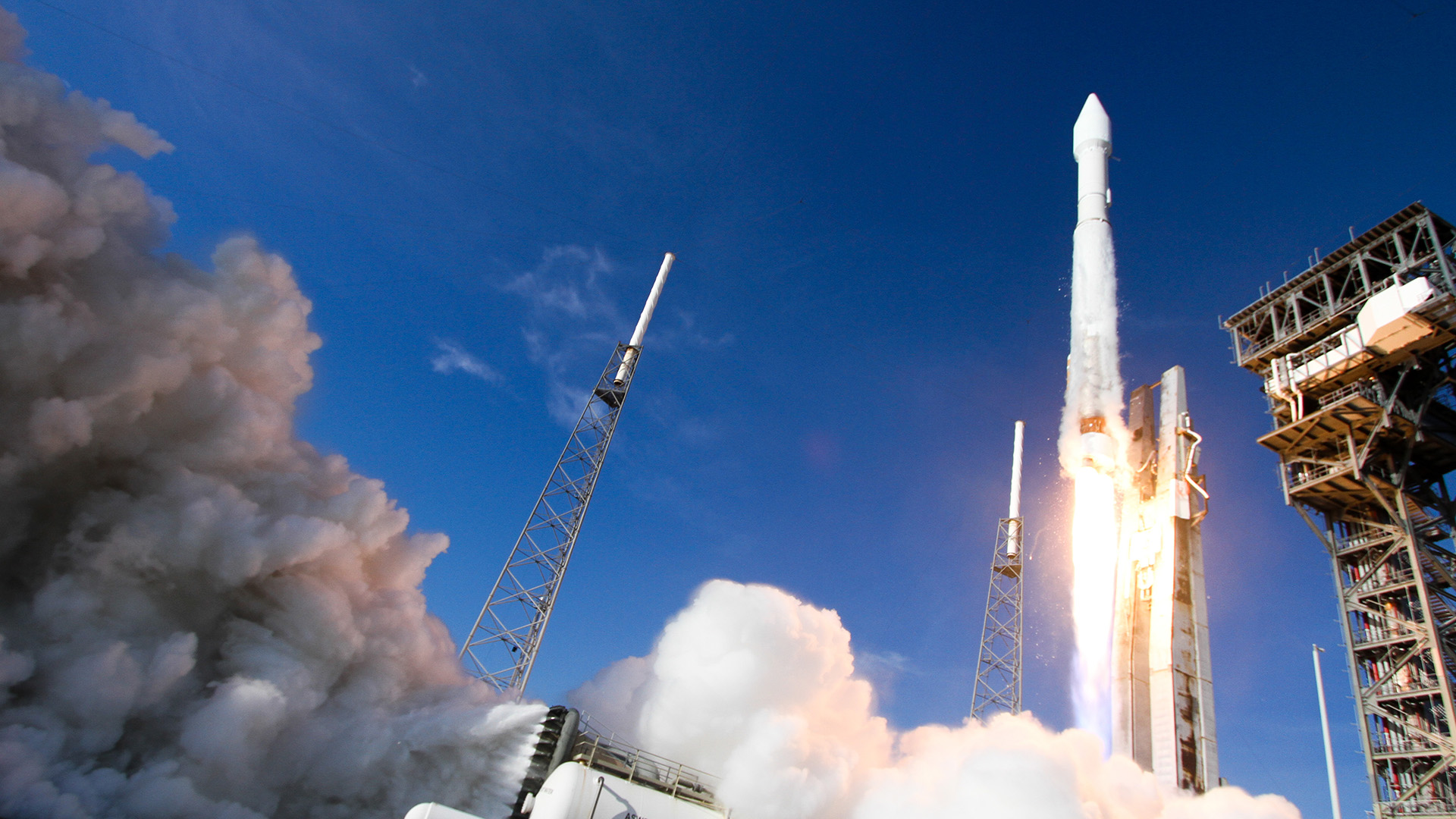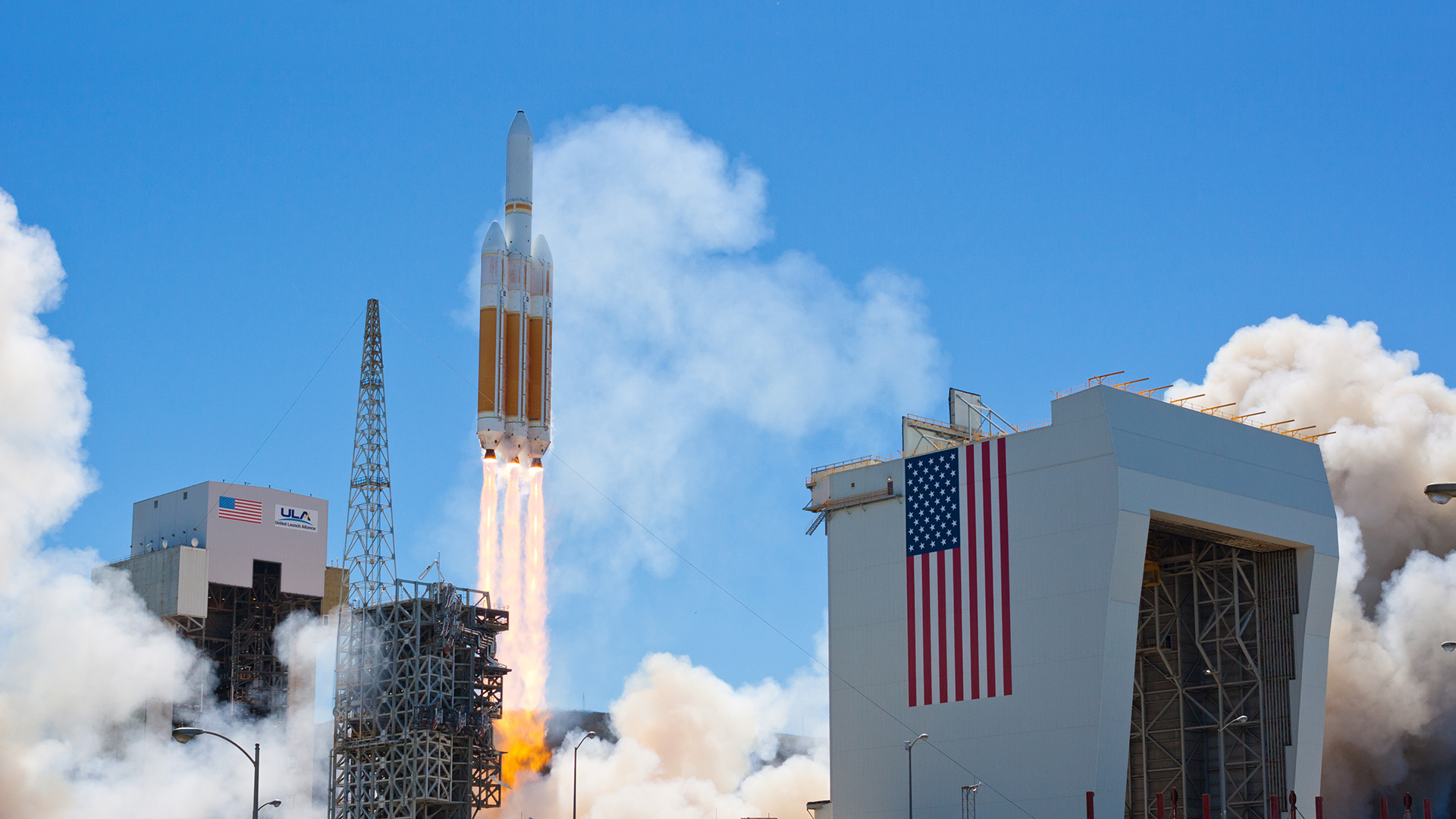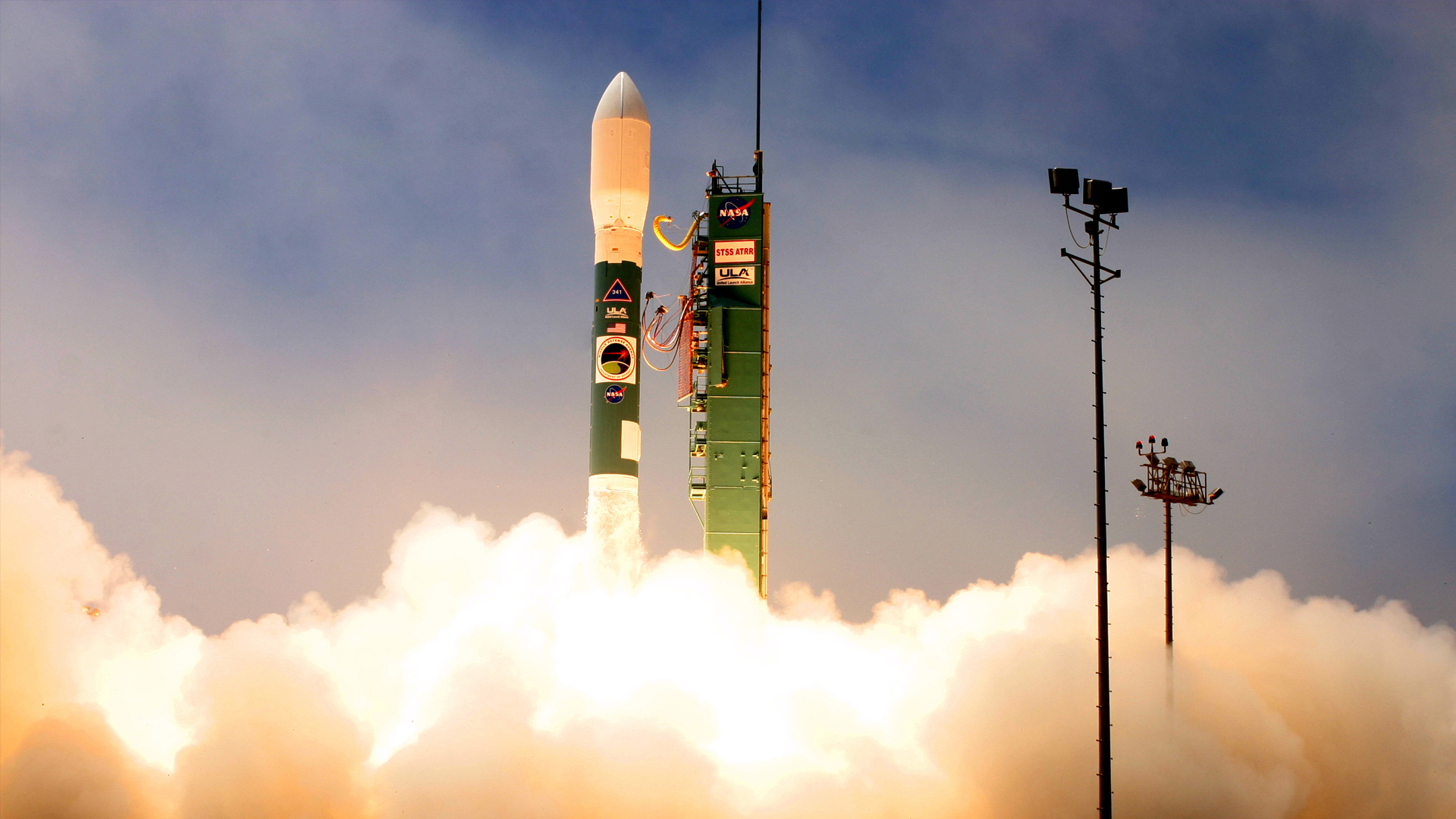Missions
Next LaunchUnited Launch Alliance Launches Solar Observatory Mission for NASA
Atlas V SDO Mission Booklet
CAPE CANAVERAL, Fla., Feb. 11, 2010 - United Launch Alliance successfully launched NASA's latest scientific exploration mission, the Solar Dynamics Observatory (SDO), aboard an Atlas V rocket from Space Launch Complex-41 at 10:23 a.m. EST today. This was ULA's first launch of 2010 and marked the 100th use of the commercial Atlas Centaur launch vehicle since its first launch on July 29, 1990. The first commercial launch was NASA's Combined Release and Radiation Effects Satellite (CRRES) spacecraft.
"ULA is extremely proud to be a part of the SDO mission, NASA's first satellite launch of its 'Living with a Star' program," said Mark Wilkins, ULA Vice President, Atlas Product Line. "This launch culminates years of hard work by our NASA customer and our ULA launch team. It's appropriate that our 100th use of a commercial Atlas Centaur was for a NASA mission since Centaur was originally developed for NASA's lunar program."
The Centaur upper stage began launching as a NASA vehicle on top of Atlas in 1962 to land surveyor spacecraft on the Moon in preparation for manned landings by Apollo. As the original government-managed Atlas Centaur program was nearing its end, it was resurrected as a commercial vehicle in the late 1980s by General Dynamics. Upgraded versions of Atlas Centaur have been flying missions since 1990, with the SDO launch marking its 100th flight. Centaur is probably most famous for its role in NASA's recent Lunar Reconnaissance Orbiter and Lunar Crater Observation and Sensing Satellite (LRO/LCROSS) mission where it crashed into the Moon in October 2009 to help NASA confirm the presence of water at the Moon's South Pole.
"Our Atlas launches of the past two decades would not be the success they were without the Centaur upper stage conducting its mission flawlessly," Wilkins said. "We look forward to the next 100 Centaur missions."
The SDO mission was launched aboard an Atlas V 401 configuration and it used a single common core booster powered by the RD-180 engine.
ULA's next launch is the NASA/NOAA Geostationary Operational Environmental Satellite P (GOES P) mission, which will be launched aboard a Delta IV rocket on behalf of Boeing Launch Services. The launch is scheduled for Mar. 1, 6:19 p.m. EST, from Space Launch Complex-37 here.
For more information on the ULA joint venture, visit the ULA Web site at www.ulalaunch.com, or call the ULA Launch Hotline at 1-877-ULA-4321 (852-4321).





